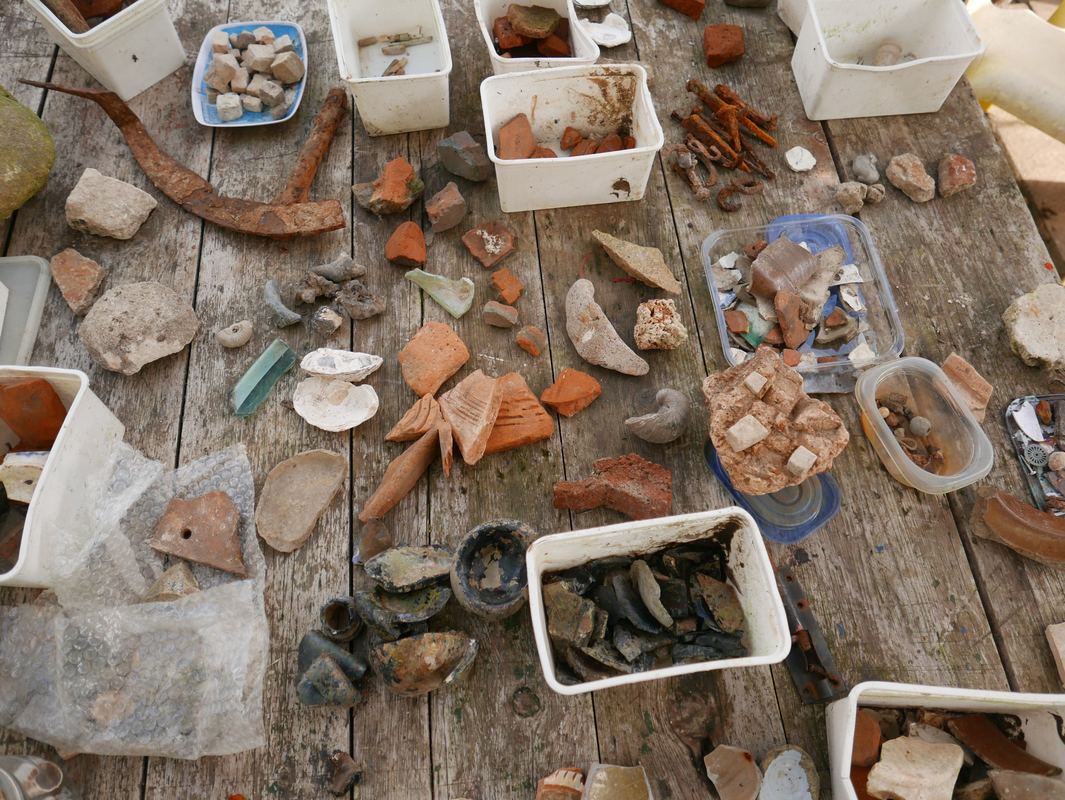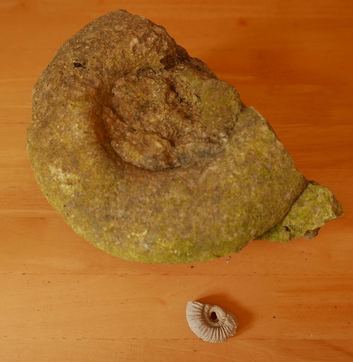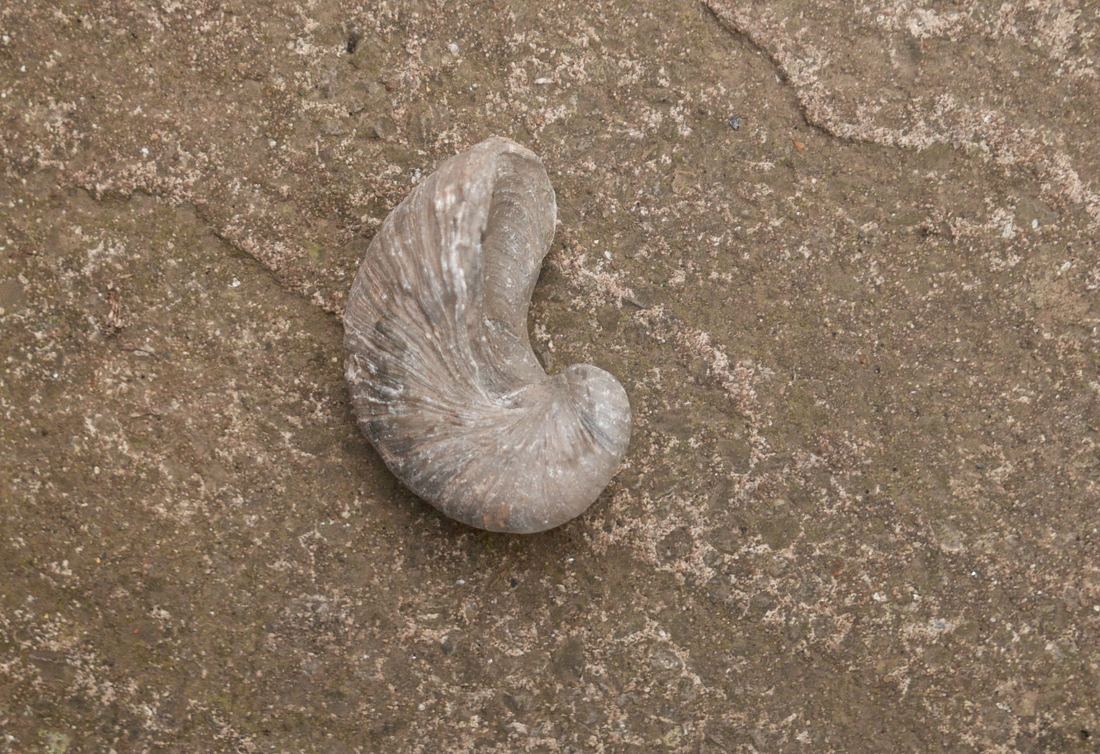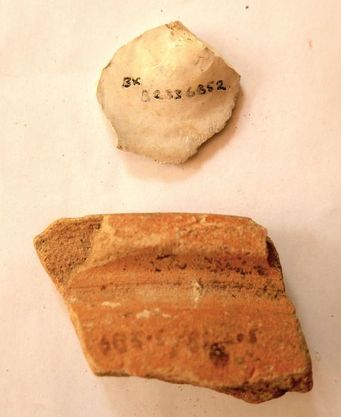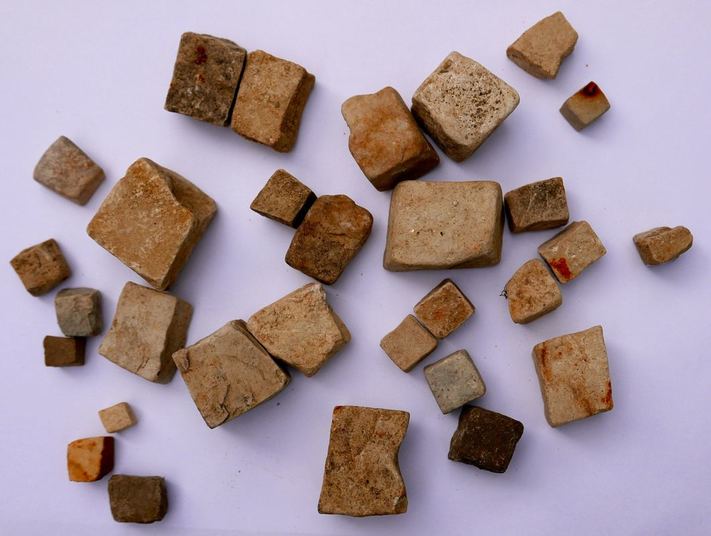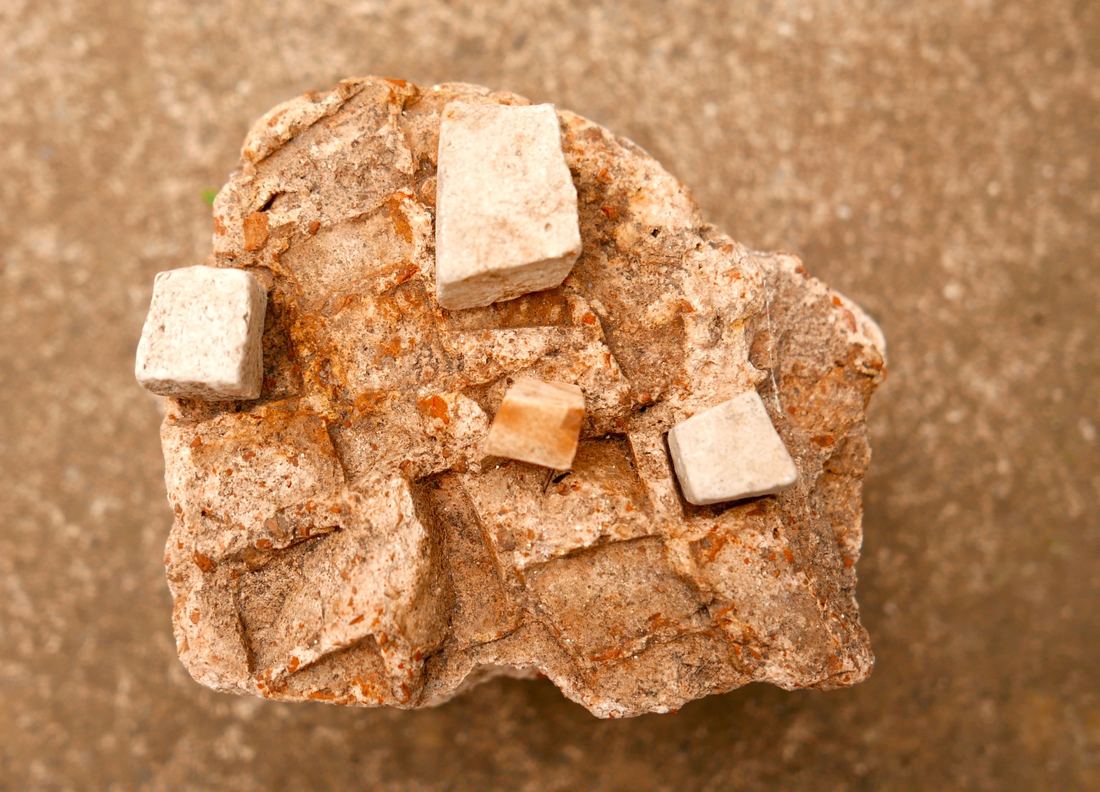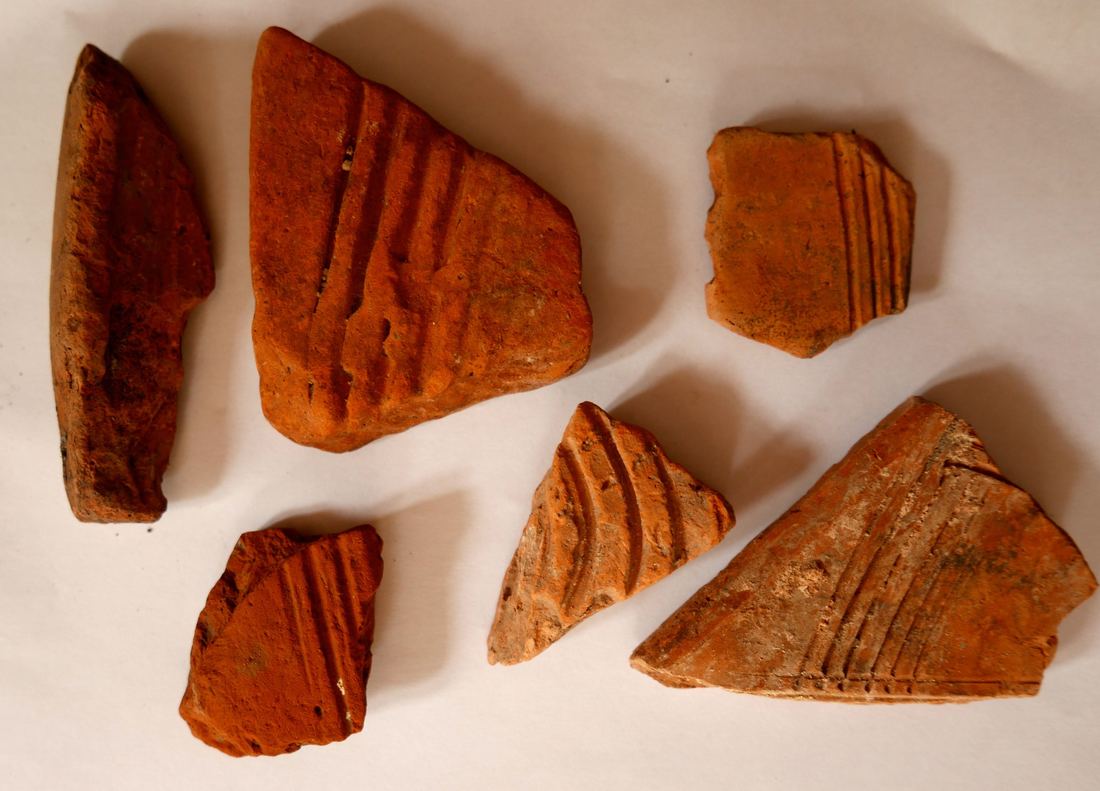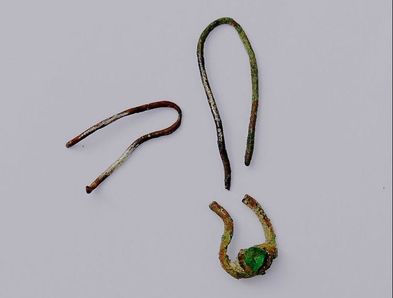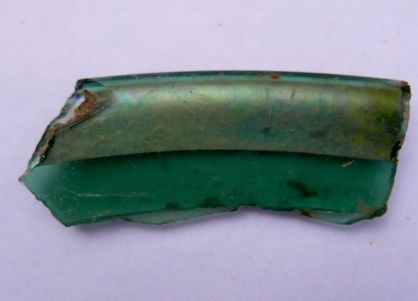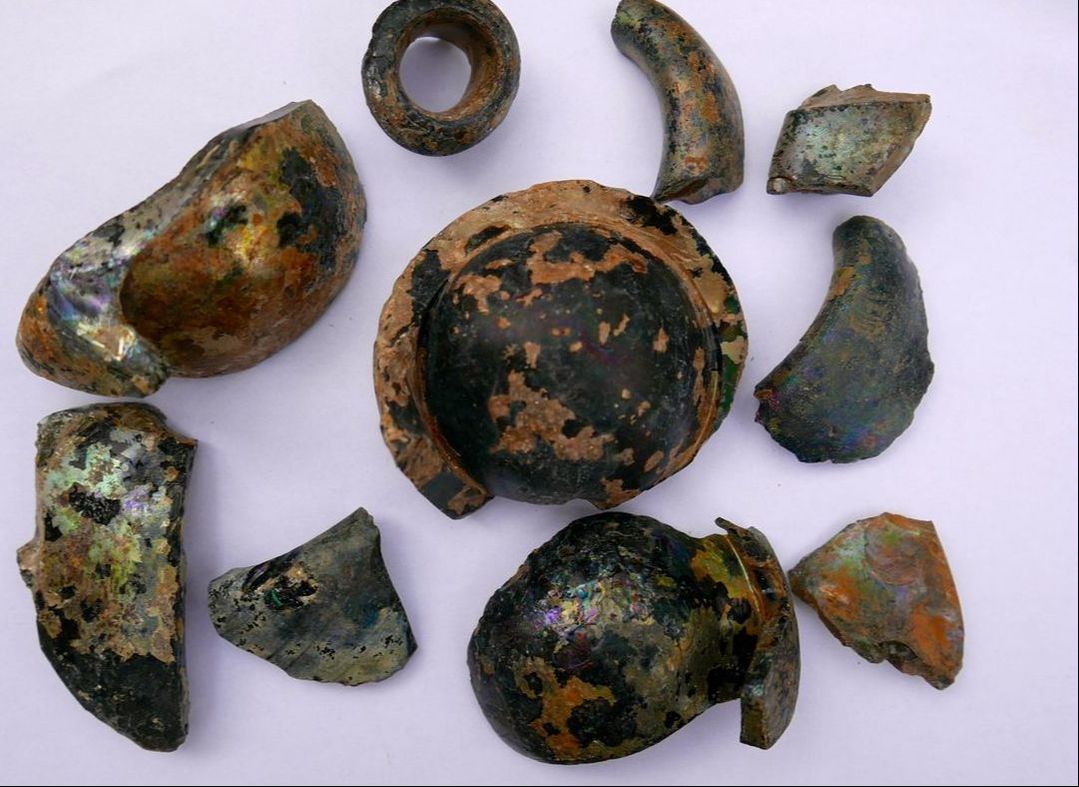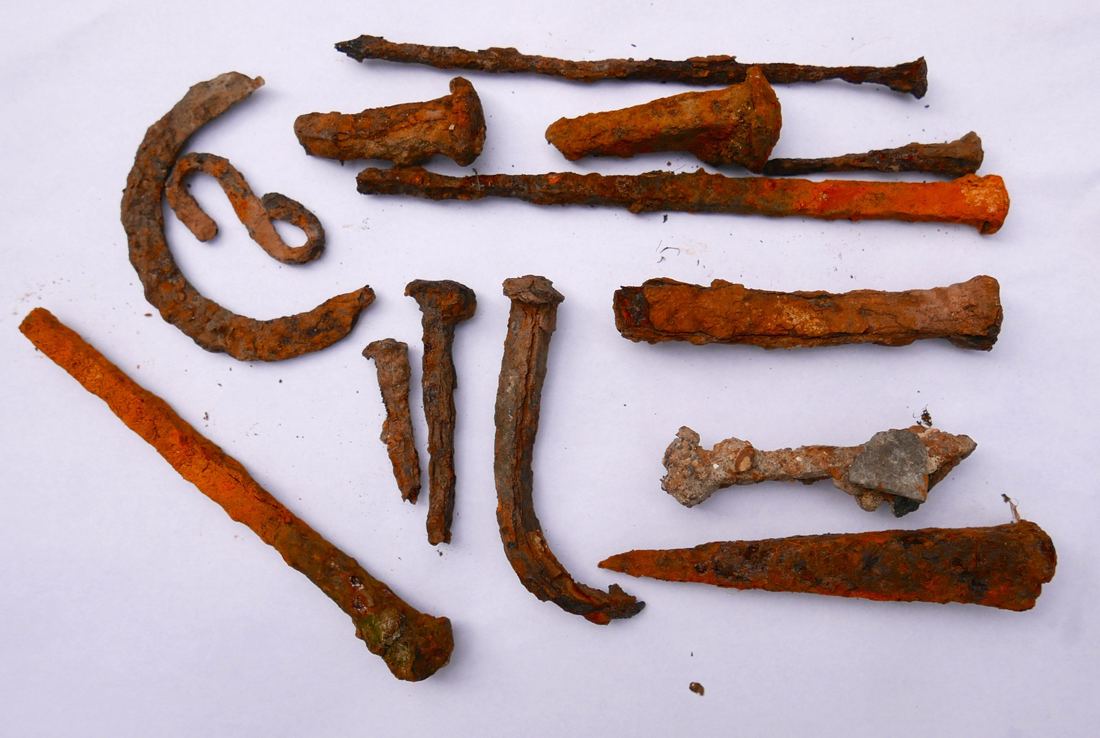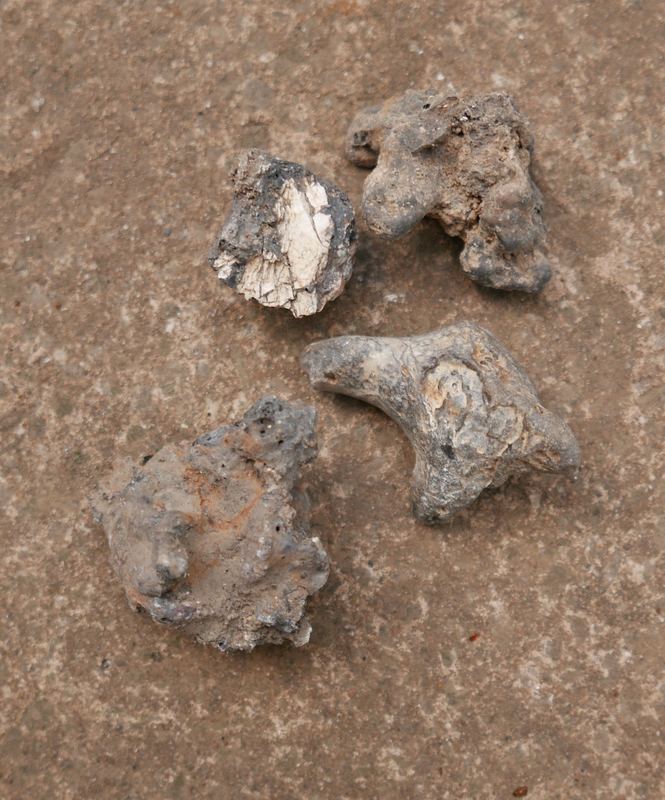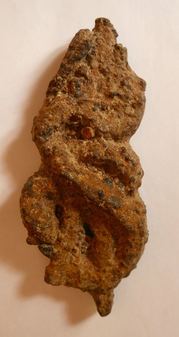|
Early History Hoard
Hidden History Part 2 Finds by Susie Brooks May 2017 Like many of us, Susie Brooks enjoys walking from her home on the Devizes Road around the village. Unlike most of us, she keeps her eyes peeled for hidden treasure recalling Box's history. These are just some of her finds over the last four years. She has tried to date them through the Wiltshire Museum but all your corrections are welcomed. All photos courtesy Carol Payne. Right: Part of the finds collection |
Pre-History Finds
In 79 AD certain fossils were given the name ammonites because they were thought to resemble ram's horns, the emblem of the Egyptian god Ammon. Ammonites were sea-swimming molluscs from the Mesozoic period, from 248 million years ago until 66 million years. The ones found in Box are from the middle of this time, the Jurassic period 206-million until 144-million years ago, when our region was submerged by warm seas. The so-called K-Pg extinction (sometimes called K/T) brought the Mesozoic period to a close and ended three-quarters of all plant and animal life on earth.
These finds aren't unusual but they add a different dimension to the history of the village, which we can only scratch on a superficial level in our knowledge of Box's past. The smallest ammonite was very special to the children who found them in their archaeology club digging in the school garden before the new play area was made. The large fossil in the same picture was found in Ley Woods. The fossil on the right (familiarly known as Witches toe-nail ) is a Gryphaea, probably also from the Jurassic period.
In 79 AD certain fossils were given the name ammonites because they were thought to resemble ram's horns, the emblem of the Egyptian god Ammon. Ammonites were sea-swimming molluscs from the Mesozoic period, from 248 million years ago until 66 million years. The ones found in Box are from the middle of this time, the Jurassic period 206-million until 144-million years ago, when our region was submerged by warm seas. The so-called K-Pg extinction (sometimes called K/T) brought the Mesozoic period to a close and ended three-quarters of all plant and animal life on earth.
These finds aren't unusual but they add a different dimension to the history of the village, which we can only scratch on a superficial level in our knowledge of Box's past. The smallest ammonite was very special to the children who found them in their archaeology club digging in the school garden before the new play area was made. The large fossil in the same picture was found in Ley Woods. The fossil on the right (familiarly known as Witches toe-nail ) is a Gryphaea, probably also from the Jurassic period.
Finds of 1967
|
There have been several Paleolithic finds made by others over the years in the centre of Box, around the Selwyn Hall, and in the spring waters and gardens of nearby properties.
Twenty-four flint and pottery pieces were discovered when the Selwyn Hall was built in 1967, eighteen pieces of which came from a small area perhaps indicating that this was a flint-napping site.[1] The finds I discovered were numbered in the Selwyn Hall excavation, left by archaeologists on the site, only to re-emerge fifty years later. The numbered specimen above right is a flint scraper typical of the Mesolithic period about 10,000 years ago. The item below is probably a piece of Roman pottery not considered worth keeping by the archaeologists and abandoned.
|
Roman Treasure
Considering how little of Box's villa is visible, it is amazing how many Roman artefacts emerge in the spring by Box Church and further down the hill in the river beneath the bridge over Box Brook to the Horse Field. The tesserae (mosaic pieces) seen above and below left and centre came from the floors of the villa's magnificent rooms. They have been emerging for almost two thousand years and emphasise how grand the villa was.
Considering how little of Box's villa is visible, it is amazing how many Roman artefacts emerge in the spring by Box Church and further down the hill in the river beneath the bridge over Box Brook to the Horse Field. The tesserae (mosaic pieces) seen above and below left and centre came from the floors of the villa's magnificent rooms. They have been emerging for almost two thousand years and emphasise how grand the villa was.
Below left is the mortar attatched to the tesserae. It shows clearly how tesserae were fixed into the mortar, only seen occasionally. The finds below right are part of the hypocaust (heating system) from Box's Roman villa.
There are a number of expensive remnants from Roman life at the villa. Below centre are the gold pins and an emerald pendant or ear-rings of uncertain date, believed to have been owned by a Roman lady. Below right is the rim of a glass dish, identified by Wiltshire Mueum as probably Roman. These all came from Box Brook.
Pottery and Glass Finds
Slipware pottery below left is probably from the 17th or 18th century. It was made by a traditional technique for decorating pots, mostly for domestic use, which has been used for thousands of years. The glassware below right was found on the entrance to Box House and probably was Victorian wine bottles.
Slipware pottery below left is probably from the 17th or 18th century. It was made by a traditional technique for decorating pots, mostly for domestic use, which has been used for thousands of years. The glassware below right was found on the entrance to Box House and probably was Victorian wine bottles.
Other Finds
Below are some of the other local finds largely of individual, worthless items, objects which nonetheless tell us about our ancestors in the village. At one time we took a lot of bones to the Wiltshire Museum which we had found on the surface near Box churchyard. They told us to return them immediately as there was a risk of catching lock-jaw. So please be careful what you decide to conserve.
Below are some of the other local finds largely of individual, worthless items, objects which nonetheless tell us about our ancestors in the village. At one time we took a lot of bones to the Wiltshire Museum which we had found on the surface near Box churchyard. They told us to return them immediately as there was a risk of catching lock-jaw. So please be careful what you decide to conserve.
The finds by Susie Brooks are fascinating and really show the evolving history of Box village. They were all surface finds made by observation rather than by digging. Have you made any interesting or unusual discoveries in your house or garden? If so, we would love to hear from you and to extend our knowdge of Box's hidden history.
References
[1] HR Hurst, DL Dartnall, C Fisher, with contributions from others, including RA. Hodges, Excavations at Box Roman Villa, 1967-8, Wiltshire Archaological and Natural History Magazine, Vol. 8, 1987
[1] HR Hurst, DL Dartnall, C Fisher, with contributions from others, including RA. Hodges, Excavations at Box Roman Villa, 1967-8, Wiltshire Archaological and Natural History Magazine, Vol. 8, 1987
